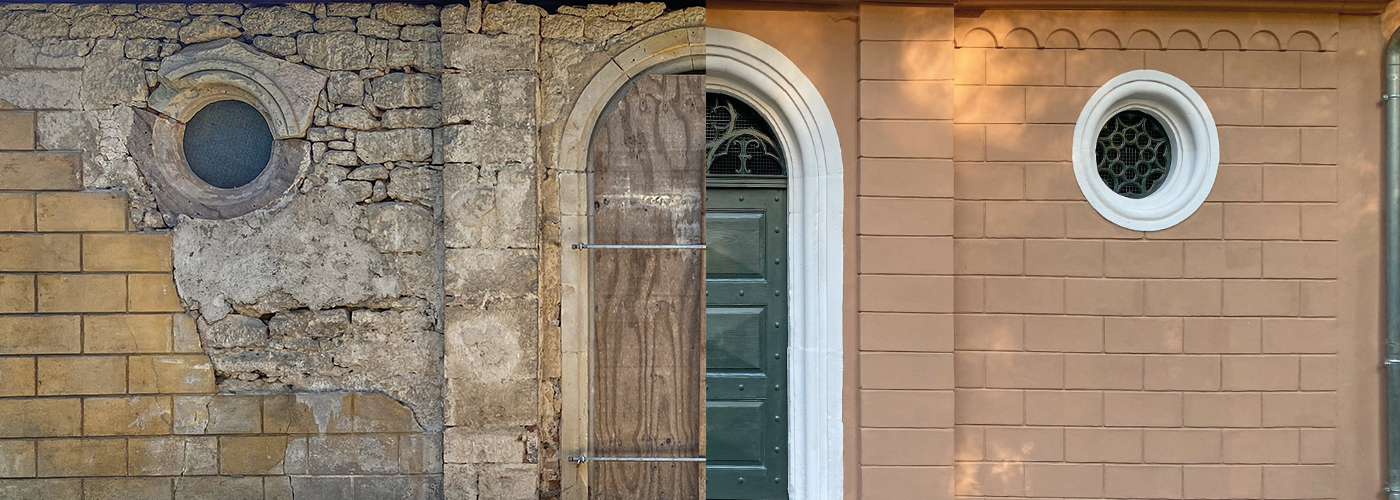Renovation | "Gebeinhäuser", Historic Cemetery Weimar
Testimony of the past
In addition to the rendering and colouring of the surfaces, the doors and windows of the "Gebeinhäuser" (ossuary houses) were reconstructed or restored. Thanks to these restoration measures, these historic buildings can now bear witness to the burial culture of the past centuries. Despite the new rendering, the surfaces do not look like they have been newly rendered - the charm of the past has been preserved in the ossuaries.
Historical architecture
The Historic Cemetery in Weimar with its Ducal Vault has been part of the "Classical Weimar" World Heritage Site since 1998. It is one of the most visited cemeteries in Germany and reflects the different eras of the city of Weimar - with the many famous personalities who lived and worked in this city. The cemetery is known for its Ducal Vault with Russian Orthodox Chapel.
The enclosing wall with the burial tablets and so-called "Gebeinhäuser" (ossuary houses) is very typical of the complex. The three hereditary burial sites of the Hoffmann, von Fritsch and Graf von Santi families are joined together to form a structural complex and were left to decay for years. Due to their importance, these burial sites were to be preserved by all means.
Detailed solutions from maxit
Already in 2014/2015, a roof repair was done to prevent the decay caused by the permanent moisture penetration. Now the main façades of the three ossuary houses have also been repaired.
The remaining façade renders were removed to reveal the brick or limestone masonry substrates. To improve adhesion to the substrate, a substrate pre-treatment with maxit san Vorspritz was carried out. A special mixture was used as a multi-layer base coat: maxit ip 370, grain size 0 - 4 mm, in the special colour shade "Historic Cemetery Weimar".
In the area of the east façade, the base coat was applied in a thickness of 50 mm. Here, the historic joint groove was worked into the surface by means of inserted triangular strips. In the critical areas, a reinforcing fabric was inserted into the base coat to minimise the risk of cracking. After the required waiting time, the newly rendered surfaces, as well as the existing surfaces in the area of the windows, were covered with a reinforcing filler made of maxit multi 270 and rubbed out smoothly.
